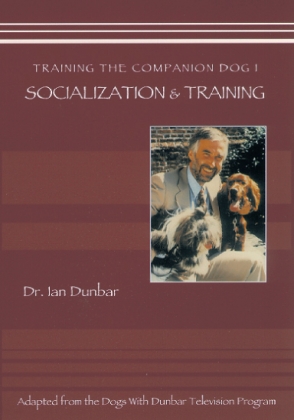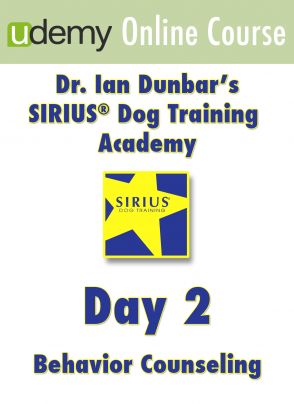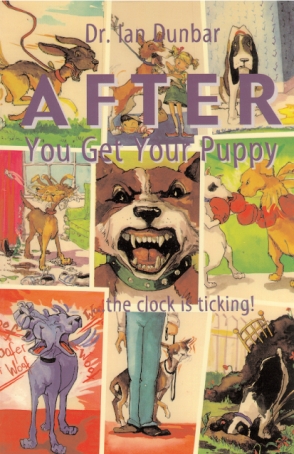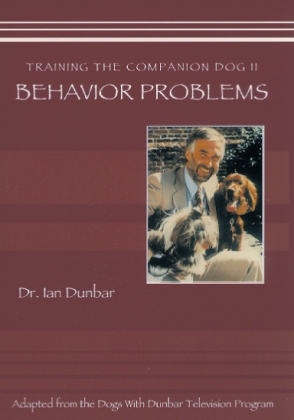Learn how to run a puppy class the SIRIUS way, using the off-leash, lure/reward, dog-friendly training methods that have made the SIRIUS philosophy the hallmark of pet dog training.
Give A Puppy A First Chance: Take Two
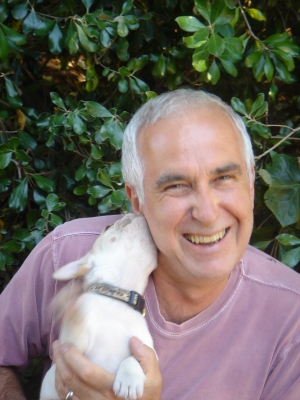
Raising a puppy to be a good-natured, well-behaved and mannerly companion dog comprises: 1. Manners Training; 2. Behavior Training; and 3. Temperament Training.
First: It’s possible to teach a dog manners, obedience, tricks and games at any time in his life. However, it’s just so easy and bordering on the hilarious to teach four- to five-week old puppies to come, sit, lie down and roll over and so, why not? I loved Brad Phifer’s videos of him beginning to lure/reward train his litter of 3-week old basenji puppies
http://www.dogstardaily.com/videos/basenji-puppy-learns-lure-3
However, the absence of basic manners in an eight-week-old puppy advertises much more serious issues — that the breeder has not been preparing the dog as a companion to live with people. Certainly, the new owner could easily train the puppy to come and sit in no time flat. However, the absence of manners waves a red flag, prompting me to investigate whether or not there are other things that the breeder has neglected to do. For example, have the puppies been housetrained? Or, have the puppies been handled, gentled and socialized to people?
Second: Again, it’s possible to housetrain older puppies and adult dogs, however, it is really (REALLY) dumb to wait. If basic household manners (where to eliminate, what to chew, when and for how long to bark) are not taught from the outset, then the puppy will improvise in his choice of toilets and toys. People term the pup’s improvisations, “bad habits”. If a puppy has been allowed to eliminate anywhere and everywhere, that’s precisely what he will do when he goes to his new home. The new owner now has to eliminate the bad habits as well as teaching the puppy good habits. As we keep saying, good habits are just as hard to break as bad habits and so, why not just teach the puppies good habits from the outset. Let’s just housetrain the entire litter to eliminate (on command) on final substrate, such as grass. Yup! Back to basenjis again:
http://www.dogstardaily.com/videos/house-training-easy-0
There is an extremely strong and direct correlation between exploring and investigating (especially chewing) and barking. Only a few breeds of dog may bark, bay or bugle when exploring the environment, however very few dogs bark when chewing a chewtoy. Making the one simple and easy change of feeding an owner-absent barker only from chewtoys, causes the number of daily barks to decrease by 90% within just one week. Of cause smart breeders and owners would not wait for destructive chewing or excessive barking to become problems. Instead they would feed puppies only from chewtoys from the outset. Within a week, the puppies will spend the majority of their homebound exploration playing with their chewtoys (rather than investigating shoes, carpets, curtains etc.). Moreover, every piece of food extricated from the chewtoy rewards the puppies for lying down calmly and quietly.
Preventing simple and predictable behavior problems (housesoiling, chewing and barking) in puppyhood is so important because they are major reasons why new owners surrender adolescent dogs to shelters.
Third: Dogs must be socialized during early puppyhood, otherwise behavior and temperament will be changed forever. Without a firm foundation of plentiful early socialization and handling, it is unlikely that the puppy will ever develop into the good-natured, happy-go-lucky, confident adult dog that it could have been.
Quick and successful socialization is possible only during puppyhood. If you miss the socialization time-window, you’ve missed it for good and your dog’s personality and temperament have been changed forever. As William Wordsworth might have said, “The pup is parent of the dog.” Yes, certainly we must continue socializing socialized puppies and adolescents for the rest of their lives. Socialization is an ongoing, never-ending process. And yes, we should try our best to rehabilitate fearful dogs. However, socializing adolescent or adult dogs takes lots and lots of time. After several weeks, months, or even years, fearful dogs may be rehabilitated so that they may function in society but they can never be what they could have been. They will never have the deep-down, relaxed confidence and social savvy to meet, greet, play or deal with all people and all dogs.
This is the crucial issue. Inadequate socialization during the puppies’ first few months of life causes long-lasting damage to temperament and behavior as an adult. And what makes this so infuriatingly frustrating? Early puppy socialization is as easy as it is thoroughly enjoyable.
Basically, the ease and long-lasting effect of socialization decreases exponentially as puppies grow older. Let’s take handling as an example. Neonatal handling is a no-brainer. Of course, the puppies look like snuggly mole rats, do very little and cannot hear or see that much but … they can smell (male, female, children, stranger etc.) and they can feel. Teaching four- to six-week old pups to enjoy being cuddled and petted (restrained and examined) and to enjoy having their ears cleaned and nails trimmed is just as easy but even more fun, because now the puppies are much cuter and even more engaging. http://www.dogstardaily.com/videos/mani-pedi-0 Teaching eight- to twelve-week-old puppies to enjoy handling is just as enjoyable but now it’s becoming a bit more difficult becasue the pups wriggle and mouth. However, teaching some five- to six-month-old adolescents to enjoy handling can be extremely time-consuming, especially if the dogs have become fearful or aggressive towards people.
Teaching dogs to thoroughly enjoy the presence and actions of people is just not that difficult, provided the groundwork has been laid during early puppyhood. As a rule of thumb, puppies need to be safely socialized with and handled and trained by at least 100 people before eight weeks of age and by another 100 people during the first month in their new homes. Then, the puppies will have sufficient confidence to explore and enjoy the otherwise-scary world of people.
Not sufficiently socializing puppies is both shameful and cruel. I find it so sad that far too many dogs are fearful of people (especially men, strangers and children) or other dogs, or scared of the environment, or scared of their own shadow even. And then, each day, these dogs have to suffer the anxiety of being forced to confront their biggest fears — people, dogs and life. So very, very sad and yet … so easily preventable.


